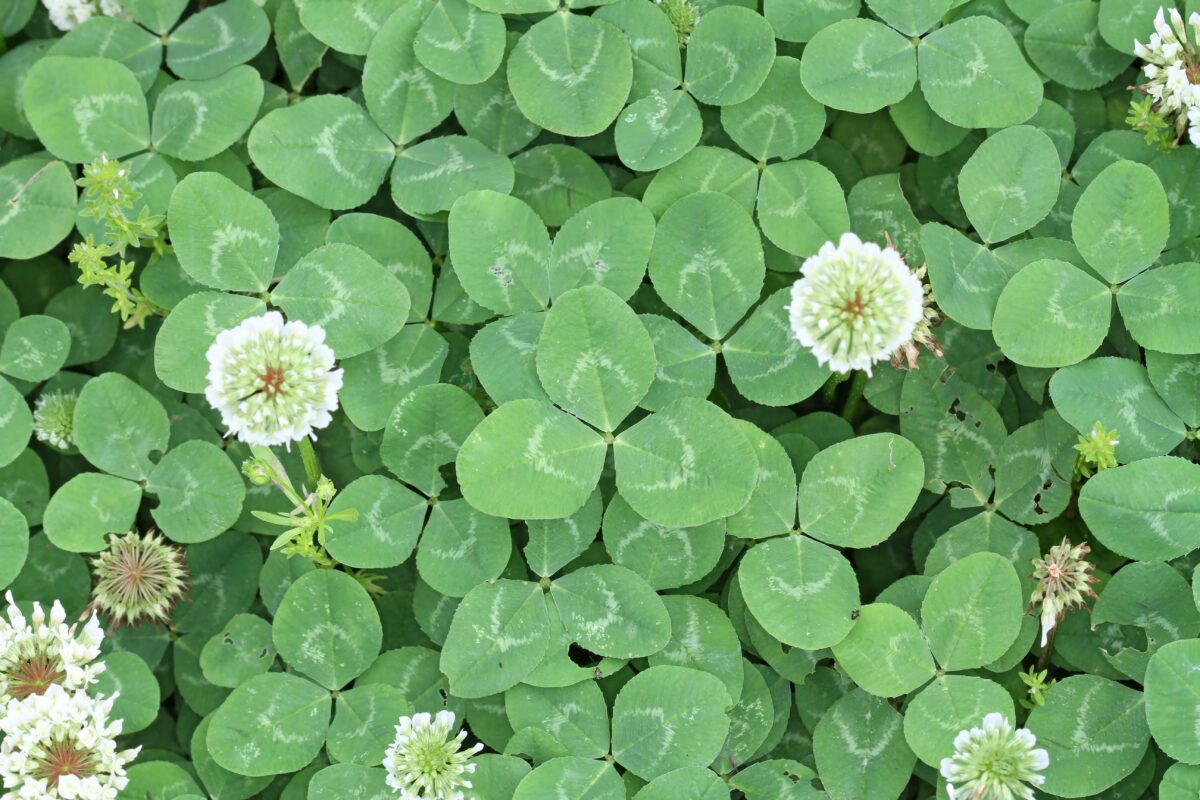Often perceived as a pesky weed in garden lawns, clovers are low-growing, common plants belonging to the family Fabaceae – also home to beans, peas and legumes. These drought resistant plants can be found throughout Britain and Ireland in a range of habitats and are key food sources for a number of pollinators.
Here we look at a selection of clovers found in Britain, highlighting their identifying characteristics and where they can be found.
White Clover (Trifolium repens)
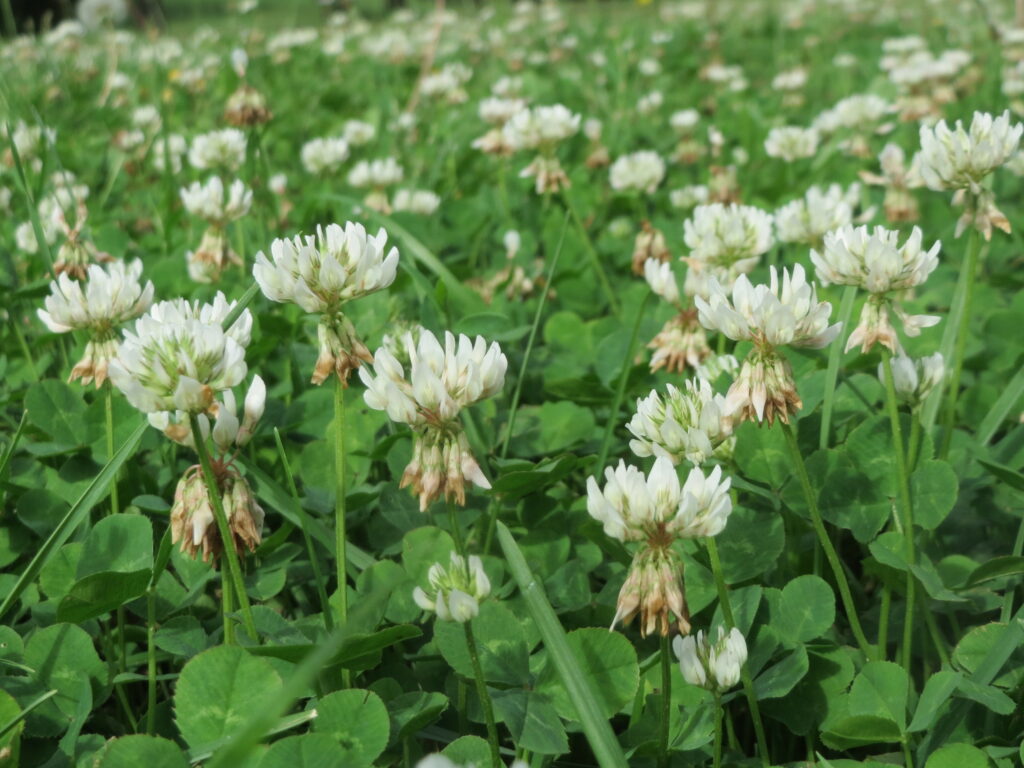
ID Notes: A familiar ‘weed’ of grassy spaces, the White Clover is easily recognised for its distinctive trefoil leaves – three leaflets bearing white markings. The flowers are white, sometimes pink toward the tips, with rounded heads made of many tubular blooms. Left to grow, this plant can grow up to 40cm in height, and is associated with Common Blue Butterflies (Polyommatus icarus) and bumblebees.
Distribution: Common and widespread throughout Britain and Ireland. This plant can be found in grassy areas from May to October, including gardens, roadsides, meadows and parks.
Red Clover (Trifolium pratense)
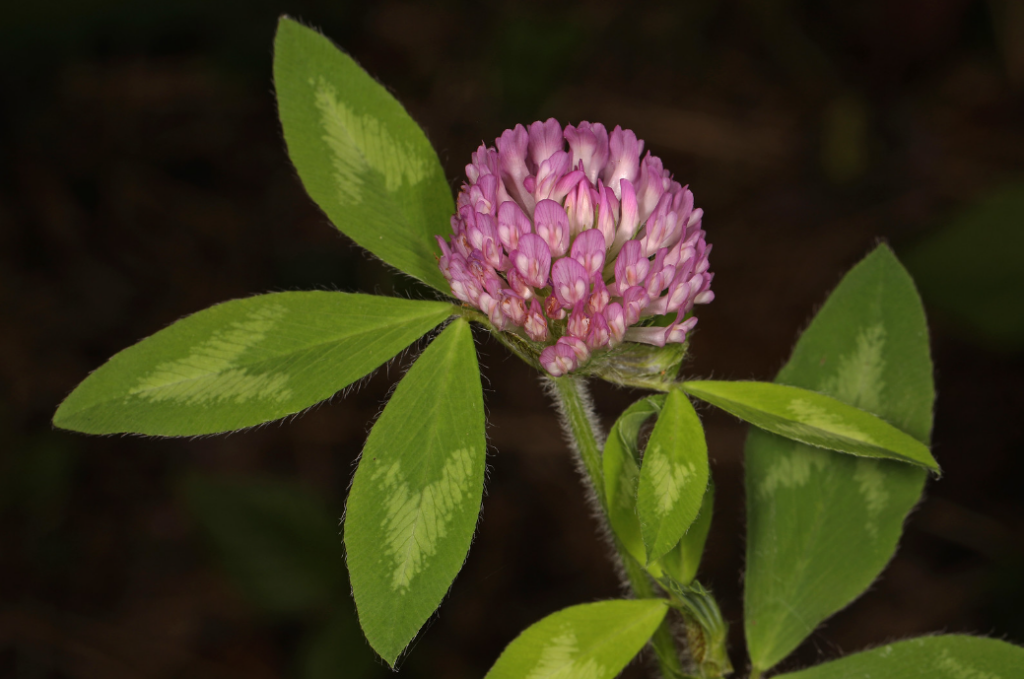
ID Notes: Similar to White Clovers, this species has three green leaflets bearing white markings, often ‘V’ shaped. The rounded flower heads bear pink/red flowers, forming clusters that are 2–3cm across.
Distribution: Common and widespread throughout Britain and Ireland. This species will flower from May to October, and can be found in gardens, meadows, parks and roadsides. It is also sown as a fodder crop for livestock, so can be found in open pasture.
Strawberry Clover (Trifolium fragiferum)

ID Notes: The Strawberry Clover has a densely packed flower head, brimming with pink-red pea-shaped flowers that turn darker throughout the growing season. The leaves have three leaflets, and the fruit resembles a pale raspberry.
Distribution: Common in the south-east of England, it is found both inland and at the coast. Throughout Wales and northern England, this plant is mostly found coastally. Strawberry Clover can be found in fields, gardens, grassland, woodland and rocky areas.
Hares-foot Clover (Trifolium arvense)
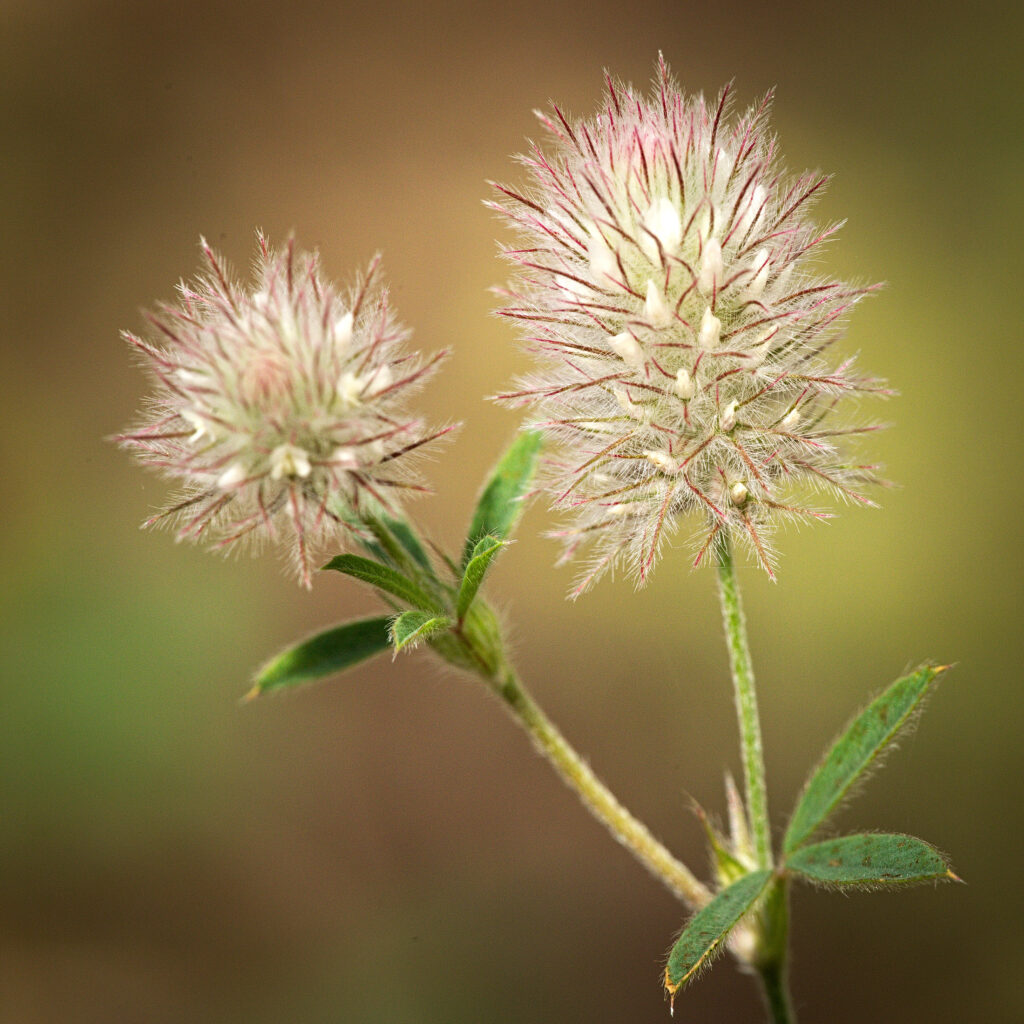
ID Notes: These pale pink flowers (2–3cm in size) are covered with small soft hairs giving it a cottony appearance, like a hare’s paw, as the name would suggest. The trifoliate leaves are divided into three leaflets, narrower than other clovers and covered in fine hair. The stalks are also covered in fine, white hair.
Distribution: Fairly common in England and Wales, with a preference for coastal areas. Hares-foot Clover is uncommon in Scotland and Ireland. It can be found from June to September in dry grasslands, meadows, sandy soils and coastal areas.
Knotted Clover (Trifolium striatum)
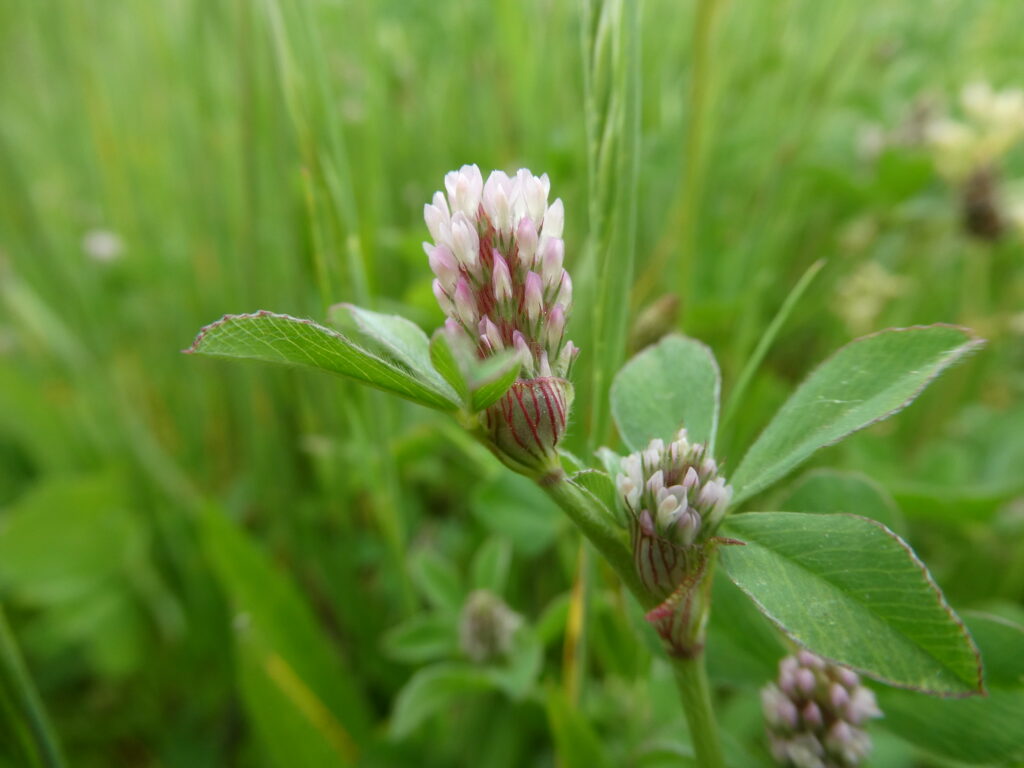
ID Notes: Up to 15mm across, the flowers of a Knotted Clover form pale pink (or white), ovoid flowerheads. The leaves are hairy on both sides and are divided into three toothed leaflets. This clover is easily distinguished by the knotting visible along the stem.
Distribution: Widespread throughout Britain. Mostly found flowering at coastal sites between May and July, it can be found on beaches, fields, grassland, meadows, roadsides and sand dunes.
Zigzag Clover (Trifolium medium)
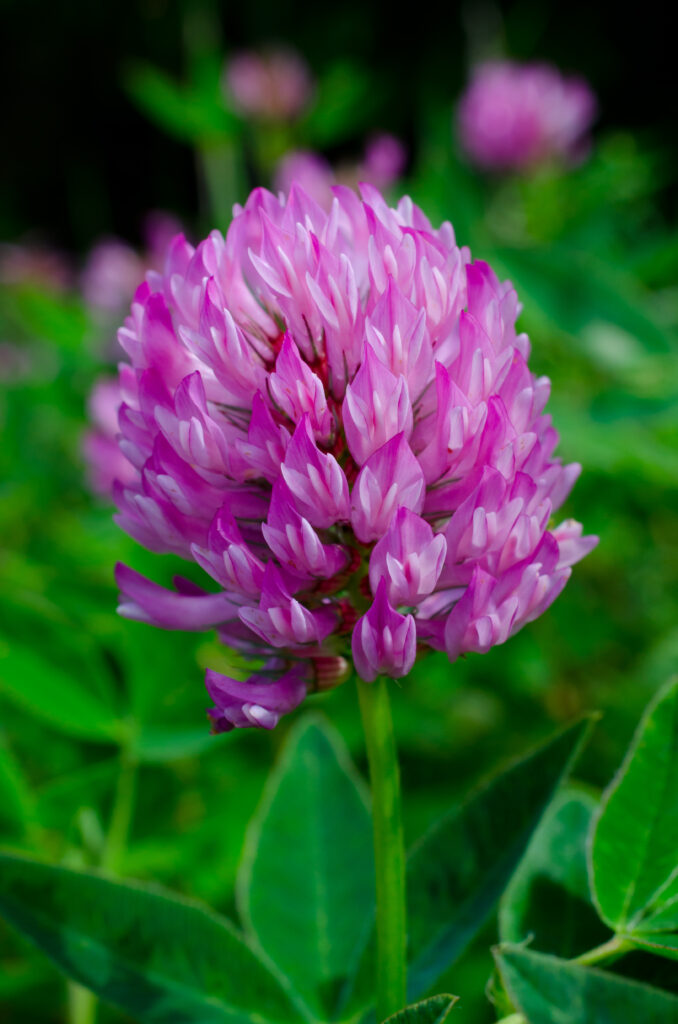
ID Notes: A dense flowerhead up to 3.5cm across, the Zigzag Clover is similar to the Red Clover, except that it has darker, reddish-purple flowers and spreading flowerheads. The leaves are longer and narrower, with less hair than other clovers and the stem is distinctively zigzagged allowing for easy identification.
Distribution: Common in England, Wales and Scotland, except the far north. Zigzag Clover can be found from May to July in gardens, grassland, roadsides and verges, often on poor soil.
Crimson Clover (Trifolium incarnatum)
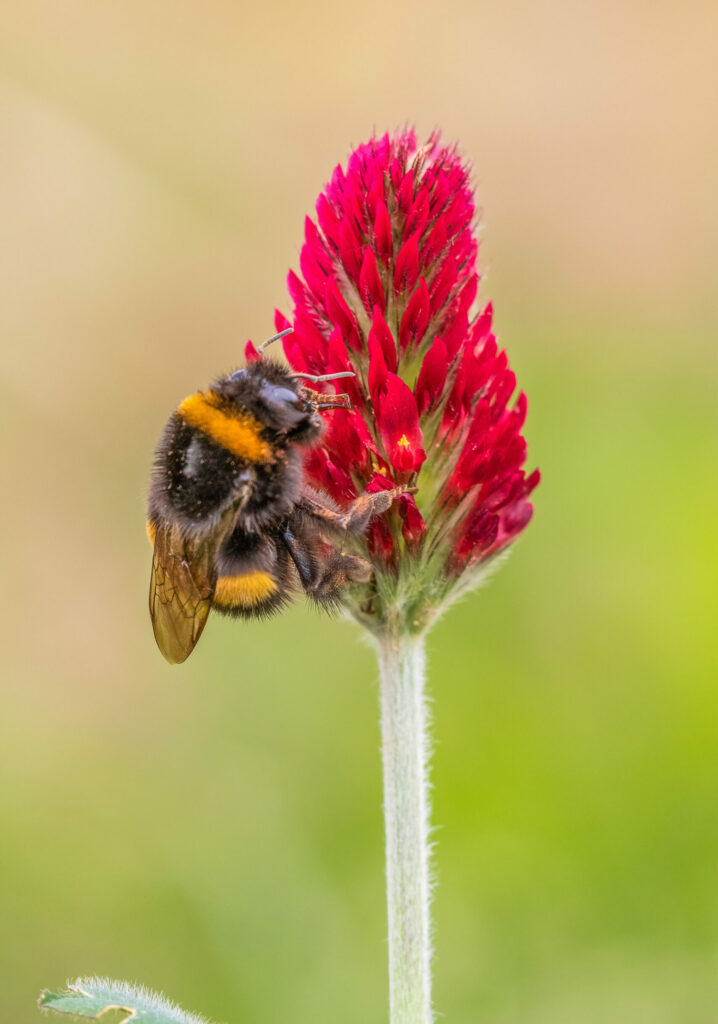
ID Notes: This plant produces dense, conical-shaped heads of vibrant red flowers. The blooms of Crimson Clover are very attractive to bees, forming a close association in spring and summer. The stem and leaves are hairy, the latter composed of three leaflets.
Distribution: Not commonly seen in Britain. This species is mostly found from May to September in grasslands, gardens, cliffsides and meadows in the south of the UK.

